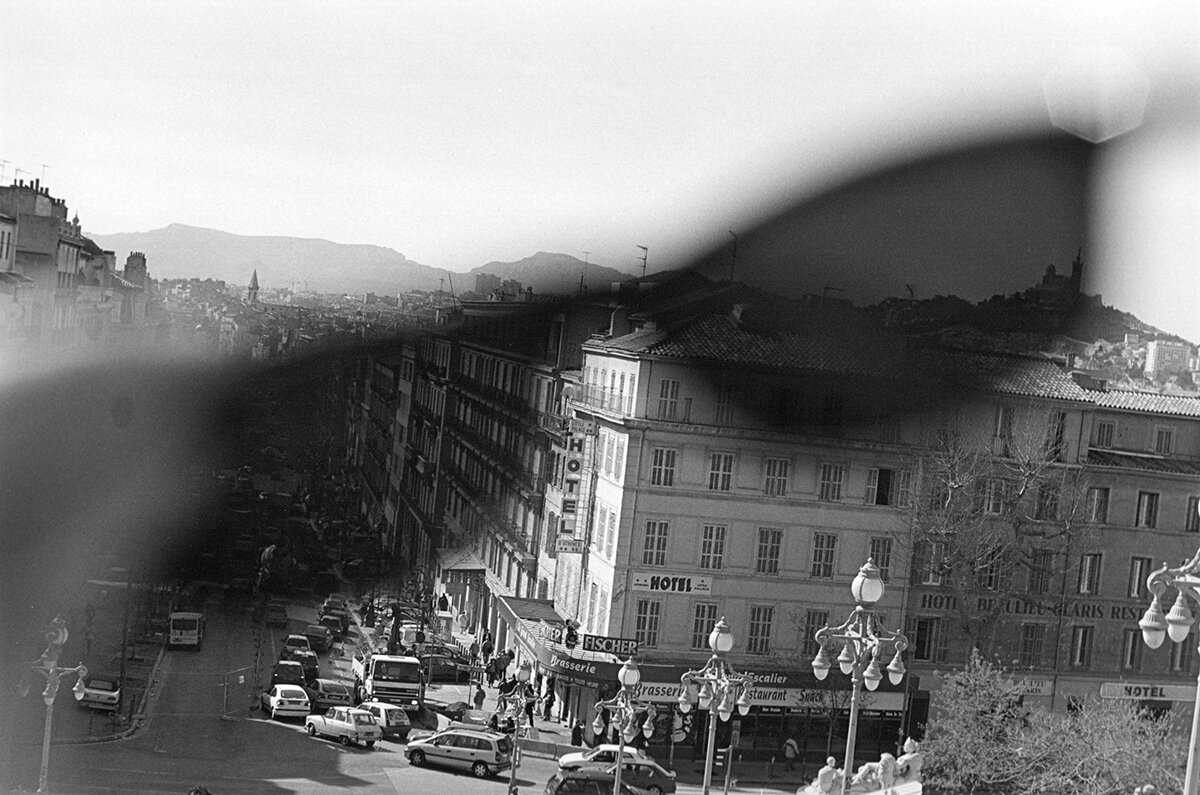Jenine Abboushi, Guest Editor
Ancient port city, modern capital and crossroads of southern places and peoples, with such cachet everywhere apparent. We are advised against France’s second city now for decades, guarding it perpetually off-grid (with many Marseillais preferring to keep their city’s gems secret).
Outsider city, poor city, uneasy refuge, rich with migrant cultures, struggles, and stories both historical and contemporary. Who is Marseillais, and what movements and peoples create this south-by-south cosmopolitan town? Maghrebi-Arab-Kabyle-Levantine-Comorian-African-Turkish-Jewish-Armenian-pied-noir-Italian-French is the city’s beating heart. One of the last cities in Europe with an unsegregated center, heterogeneous in terms of social class, race, and ethnicity, Marseille’s magnificent, dynamic sea-spread seems to promise perpetual renewal.
TMR’s Marseille issue brings together art, music, essays, hybrid works, and photography to create a kinetic portrait of the city and interrogate the nature of displacement, exclusions, networks, pluralism, historical traces, revived languages, experiences, and belonging.
Here’s a selection of rich offerings and perspectives from artists, journalists, writers, and singers who are rocking our southern corner of the world:
François Thomazeau in “Tales from the City of Galéjades” recounts legendary stories about La Rose du Ciel, a prominent house overlooking the Vieux Port, its famous literati, artist, and feminist inhabitants who fled or fought the Nazis, the ancient history of the site, the Abbey, and “the mosque of the Turks”— shifting stories that bespeak Marseille itself.
In “Lost in Marseille,” Catherine Vincent, a French-Chilean-Argentinian singer-songwriter couple, who lived in Damascus for a time before the war, open a portal to their musical project. They walked in the footsteps of Walter Benjamin in Marseille when he fled the Nazis, reenact his essay “Hashish in Marseille” in the neighborhoods he wandered, following him to his end in Portbou (where they gave a concert last year). They reimagine Benjamin as Jamal Ibntrewan (his exact anagram), a Syrian intellectual refugee aground in Benjamin’s hometown, where Catherine Vincent created their recent album Lost in Berlin.
Bernard Plossu lends us some of his celebrated and lyrical photos in “Decisive Moments in Marseille.”
gethan&myles, an Anglo-Irish artist couple and long-time residents of the city, write of their gold fever and dreams. We visit their expo, Lazarus (that ran at MUCEM last year), of pawned gold jewelry and corresponding stories of working-class and immigrant Marseille.
Mary Fitzgerald in “Cities within the City: Marseille’s Discrete Enclaves” sets Marseille’s celebrated openness “to all who come from the sea” in the context of the city’s record number of gated communities of all kinds, including the vast La Rouvière that houses Algeria’s pieds-noir following Algerian independence.
Franck Pourcel, in “Dusk: a Meditation” (“Crépuscule”), narrates his photographs of working class and immigrant youth who struggle to find their place in an uncertain light of a city under modern construction, of urban wastelands, in the midst of older generations and their rituals, and in the narrow spaces for movement and growth. He shares the music video he made for the group De la Crau who sing in Occitan-Provençal-Maritime in their new album, Temperi.
Sylvie Paz draws inspiration from her Andalusian origins, and with her group Barrio Chino, she has toured and forged musical collaborations in China, Cuba, Algeria, and Europe. She also founded the duo Zoppa with Kalliroi Raouzeou. They draw from a Spanish-Greek repertoire, and offer us a preview of their album Topographia, releasing this autumn.
Melissa Cheman, in “IAM: Marseille’s Original Hip Hop Collective,” writes of the rise of rap in Marseille, and explains what makes IAM so Marseillais.
Jenine Abboushi in “Walk Down la Canebière” invites us to accompany her down the main boulevard of Marseille that leads to the Vieux Port in all its carnivalesque glory, revealing how this town allows us to exist, see, project, remember, and imagine.
Alexis Steinman in “Shared Plates” takes us to simple, authentic food places in the city to reveal how the intermingling and borrowing between many peoples and cuisines in Marseille’s bustling neighborhoods both define and transform the city.
Almost all the contributors currently live in Marseille.
And living in Marseille is a form of travel.
—Jenine Abboushi




